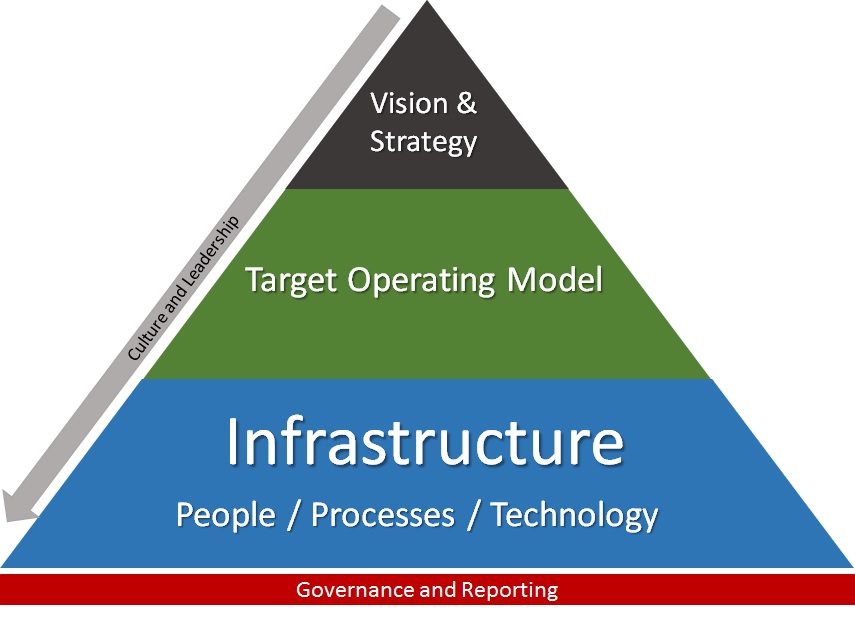The audience for the operating model will vary depending on the strategic drivers, but it can include executives, strategy teams, marketing teams, project teams, risk managers, IT teams and operational teams.
A Current Operating Model (COM) represents how an organisation is configured today, whereas the Target Operating Model (TOM) shows a future state that the organisation should be moving towards in order to achieve its strategy.
Deploying the right model can help to ensure that our clients remains abreast of any developments to successfully achieve its strategic goals.
The principle elements of a TOM can be seen in this graphic, and can best be described as follows:
Vision and Strategy
Analyse the vision and strategy of the organisation so that the business goals are aligned to the strategy such as:
> Customer service
> Cost reduction
> Expansion
> Greater agility
Target Operating Model
Define the principles and operating model:
> End to end value chain
> Front office / Back office
> Outsourcing shared services
> Interfaces / Hand offs
Infrastructure
Define the infrastructure of the organisation that will deliver the strategy:
> Organisation structures
> Roles responsibilities, skills and capabilities
> Role Performance Measures / KPIs
People
Defining the level and capability of the people required to meet the objectives of the organisation and to serve its customers:
> How many people do you need?
> What skill levels and knowledge should they have?
> How will you remunerate them?
> What ‘New Ways of Working’ will you embody?
> How will the culture of your organisation need to adapt to accommodate your strategy?
Processes
Define the business and functional processes that will be required to support your business objectives.
Technology
Identify what technology is required to deliver your products and services to your customers through your chosen channels, whilst optimising your processes.
Governance and Reporting
Define the governance arrangements and reporting requirements to run the organisation in the most efficient and effective way.

